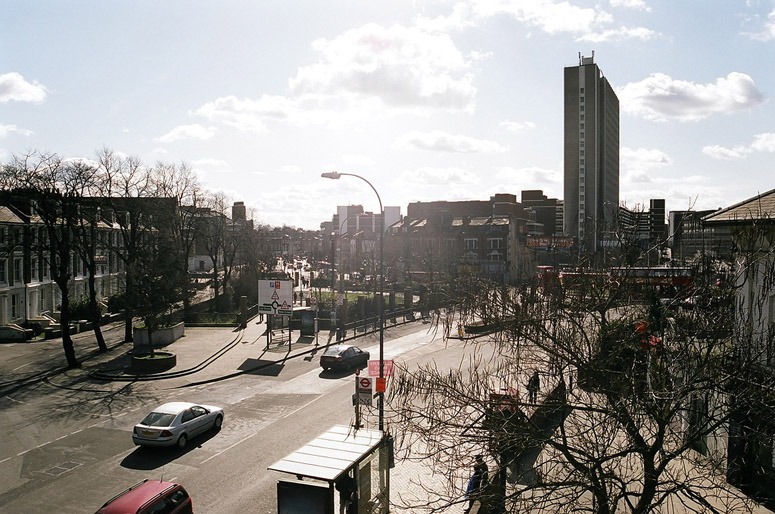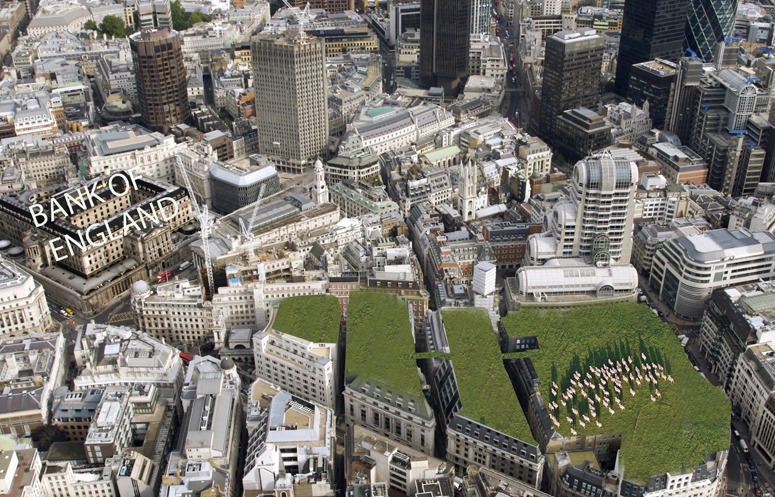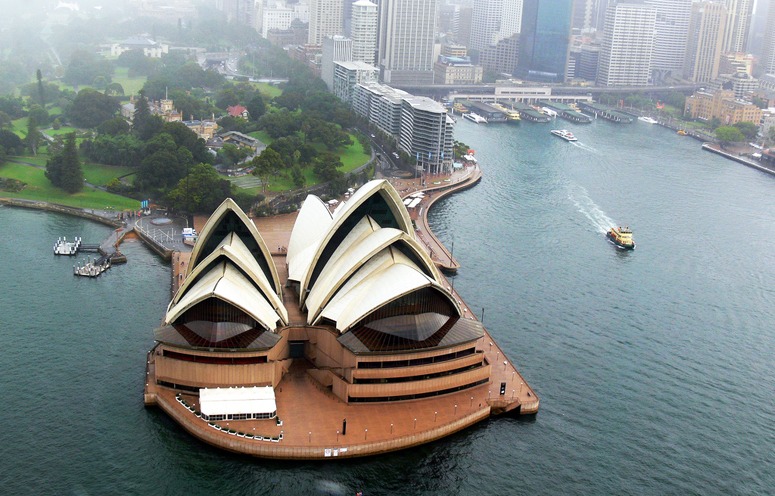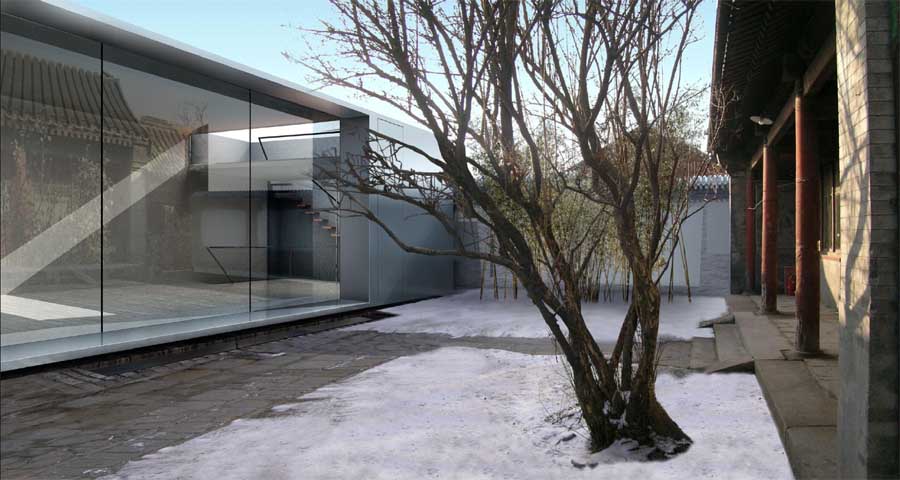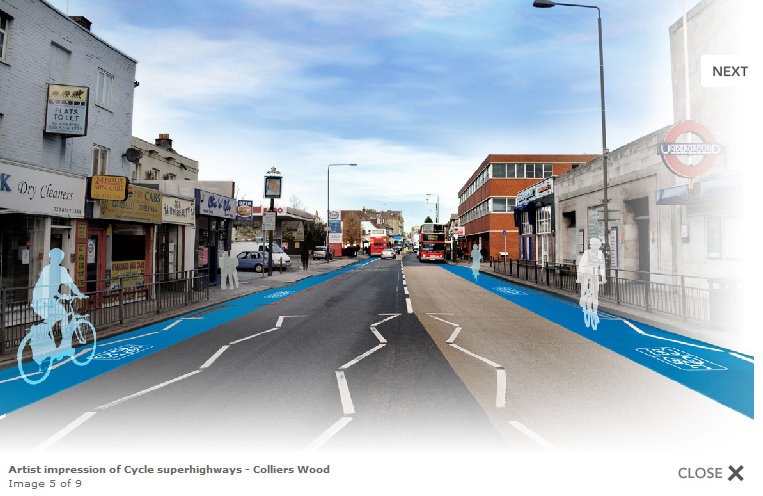
London's 'super' cycle highways are designed for ugliness. The 'artist's impression' shows threatening busses and cyclists who are already ghosts.
‘Highway’ comes from the Old English heiweg “main road from one town to another” and planning them as direct routes from origins to destinations is unusually sensible for UK cycleroute planning. But I object to their being described as ‘super’. They will be narrow, ugly,pale blue, bargain basement tracks. See for example the implementation schedule for the ‘Super Highway’ from Barking to Tower Gateway. The work can be done quickly because it is merely a paint job – and the chosen shade of blue is suspiciously close to that used by the Tory party during its recent election campaign.
A really super cycle highway would be ‘ ‘safe, fast, direct, quiet, clean, beautiful – and expensive’. So they should employ landscape architects, not engineers with paint brushes, to do the work. I worry that badly conceived cycle paths will get little use – so that the planners will then argue that it was a waste of money. They should (1) go ahead with the present plans as a quick stopgap measure (2) design AT LEAST ONE truly excellent cycle route to show what could be achieved.

